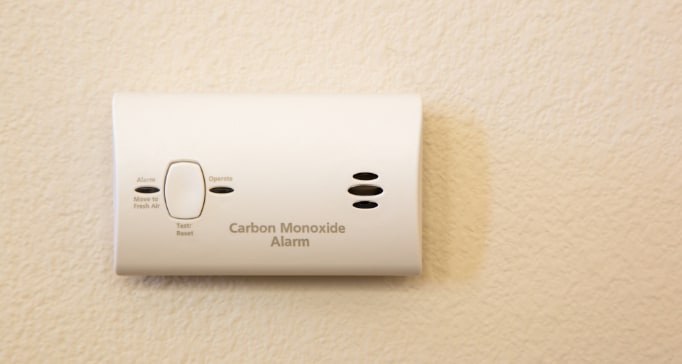
Include CO Detectors Into Your Home’s Security
Putting carbon monoxide detectors in your home is a great start, but you may boost your safety even more by incorporating them into your home security system. This supplies another safeguard, as your monitoring specialists will be notified any time a CO detector goes off. This backup can prove to be invaluable, specially if a crisis strikes in the middle of the night and you don’t hear the alarm.
Include CO Detectors In Long Island With Your Home Security System
Safeguard your family against all types of risks with a comprehensive home security system from Secure24 Alarm Systems. Our CO and fire alarms in Long Island are professionally monitored in the same manner as your other security devices. You’ll get support from a diligent, 24-hour team any time an emergency takes place. Call (631) 213-3528 today to improve the defense of your home and family.
Where To Place Carbon Monoxide Detectors In Your Long Island Home
Residents must defend against various risks like burglary, flooding, and fire. But what about a danger that you are unable to smell or see? Carbon monoxide is different from other risks as you might never realize it’s there. Despite that, installing CO detectors can easily protect you and your household. Find out more about this potentially lethal gas and where to place carbon monoxide detectors in your Long Island residence.
What Is Carbon Monoxide?
Referred to as the silent killer because of its lack of color, taste, or odor, carbon monoxide is a readily found gas formed by incomplete fuel combustion. Any appliance that utilizes fuels like an oven or furnace can generate carbon monoxide. Although you typically won’t have any trouble, issues can crop up when equipment is not frequently maintained or properly vented. These oversights can result in a build-up of this dangerous gas in your residence. Heating appliances and generators are commonly to blame for CO poisoning.
When in contact with minute levels of CO, you might experience dizziness, headaches, fatigue nausea, or vomiting. Extended exposure to higher amounts can lead to cardiopulmonary arrest, and even death.
Recommendations For Where To Place Long Island Carbon Monoxide Detectors
If your home lacks a carbon monoxide detector, buy one now. If possible, you ought to have one on each level of your home, and that includes basements. Browse these suggestions on where to place carbon monoxide detectors in Long Island:
- Install them on every floor, particularly where you utilize fuel-burning appliances, such as furnaces, gas dryers, fireplaces, and water heaters.
- Always use one no more than 10 feet away from sleeping areas. If you only install one CO detector, this is the place for it.
- Place them at least 10 to 20 feet from sources of CO.
- Do not affix them right above or next to fuel-consuming appliances, as a non-threatening amount of carbon monoxide could be released when they turn on and prompt a false alarm.
- Fasten them to walls approximately five feet above the ground so they can test air where inhabitants are breathing it.
- Avoid installing them in dead-air places and beside windows or doors.
- Place one in rooms above attached garages.
Check your CO detectors often and maintain them according to manufacturer recommendations. You will typically need to replace units in six years or less. You should also make certain any fuel-burning appliances are in in optimal working condition and sufficiently vented.
